writing skills and professional advice
Writing for Broadcast Journalists comes from a series on writing and new media which includes Writing for Journalists, Subediting for Journalists, and Web Production for Writers and Journalists. Those people writing for broadcasting (radio and television – and I suppose new media Internet podcasts) have special problems. They must make their style seem like someone talking (not writing) to their audience. They only have one chance to get their message across. And they have to be very careful for legal reasons (‘a bus hit a car’ could be contentious, but ‘a bus and a car collided’ is safer).
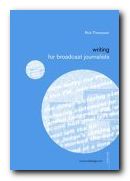 Rick Thompson’s guidance manual is packed with advice to would-be writers for this medium. Much of his attention is devoted to the pursuit of cliché, journalese, tabloidese, official doublespeak, and gobbledygook. But he also deals with subtler issues – all based on his long experience in broadcasting – such as the choice of words which sound right, or the avoidance of ambiguity. I was struck by the fact that much of the advice he offers is exactly the same as that offered in academic writing.
Rick Thompson’s guidance manual is packed with advice to would-be writers for this medium. Much of his attention is devoted to the pursuit of cliché, journalese, tabloidese, official doublespeak, and gobbledygook. But he also deals with subtler issues – all based on his long experience in broadcasting – such as the choice of words which sound right, or the avoidance of ambiguity. I was struck by the fact that much of the advice he offers is exactly the same as that offered in academic writing.
And for the same reasons – the search for clarity and accuracy. He advises that you should use short sentences; start with the most important statement; use the active voice; and minimise subordinate clauses. So in fact, although his guidance is targeted at broadcast journalists, it could be profitably followed by writers in most other genres as well.
He’s someone with years of experience at the top level of the national and international profession, and he’s smack up to date with his references – such as the Labour government’s sexed-up dossiers on non-existent weapons of mass destruction in Iraq.
That’s one of the things I really enjoyed about this book. Its primary purpose is to be a style guide for would-be journalists – but en passant he provides a great deal of insight into political communication skills and public relations strategies.
He has a long list of topics about which extra care should be taken: the titles of important people; geographic place names; the political divisions of the British Isles; numbers and measurement; sex, gender, and race. A slip on any one of these issues can easily lead to a court case.
There’s a clear explanation of the different techniques required for radio, television, and online news reporting; how to write headlines, how to use graphics, and even how to write for live broadcast on location.
He finishes with an interesting list of what he calls ‘dangerous words’ – terms which are commonly misused or misunderstood, such as anticipate and chronic, plus interesting cases such as inflammable and incombustible, which mean the opposite of what you would imagine. This is an amusing way of exposing cliches such as a safe haven. A haven is by definition a safe place of shelter – so this expression is tautologous.
The book is aimed at journalists, but anyone with a serious interest in developing their literacy will learn a lot about professional writing skills from what he has to say.
© Roy Johnson 2010
Rick Thompson, Writing for Broadcast Journalists, Abingdon: Routledge, 2nd edition 2010, pp.192, ISBN: 0415581680
More on journalism
More on creative writing
More on writing skills
More on publishing
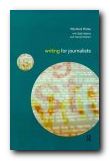
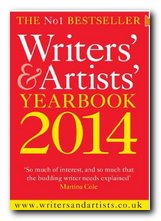 The Writers’ and Artists’ Year Book
The Writers’ and Artists’ Year Book
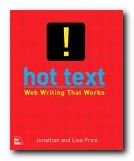 Hot Text: Web Writing that Works
Hot Text: Web Writing that Works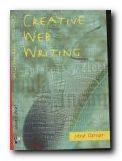 Creative Web Writing
Creative Web Writing